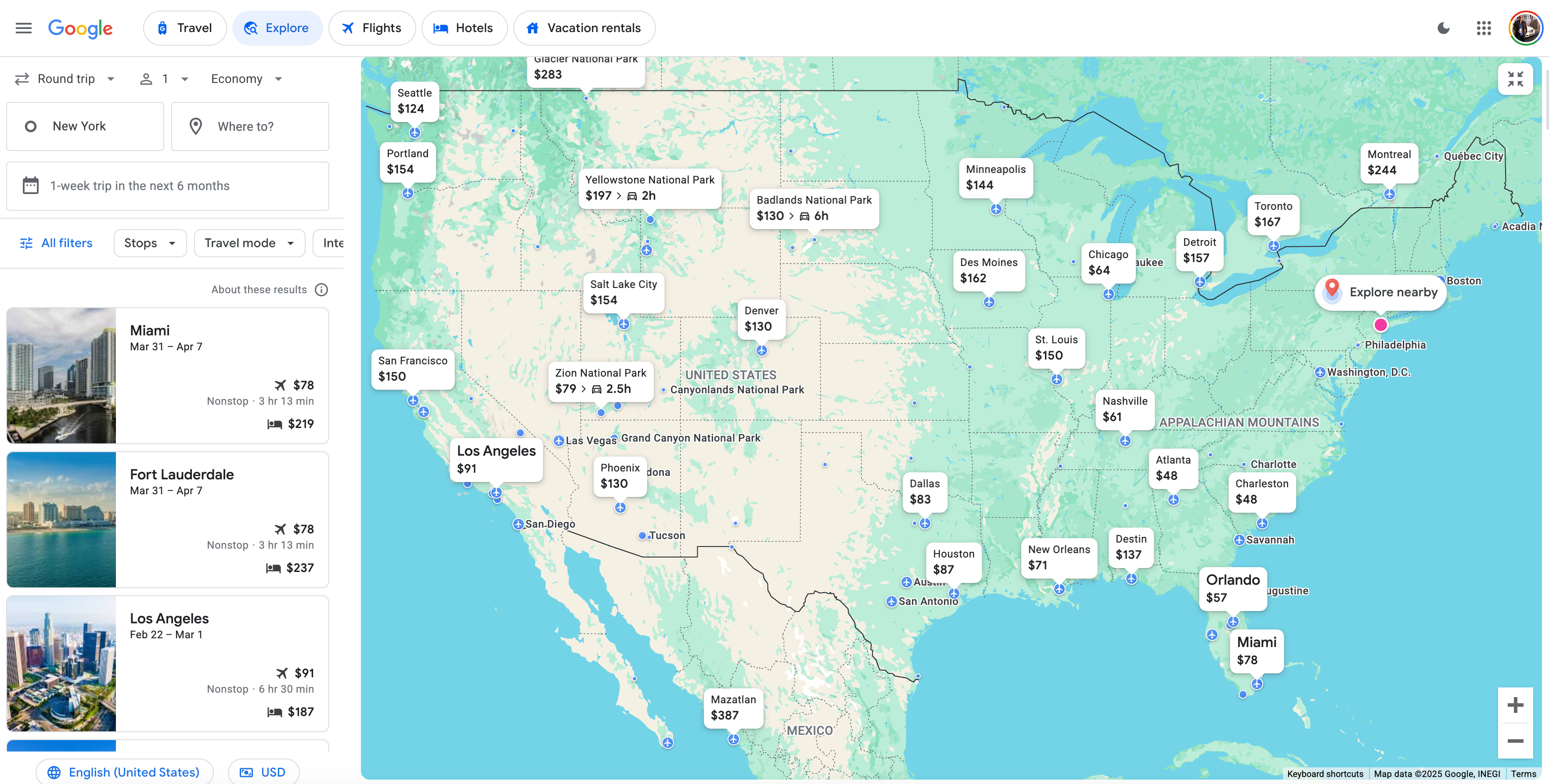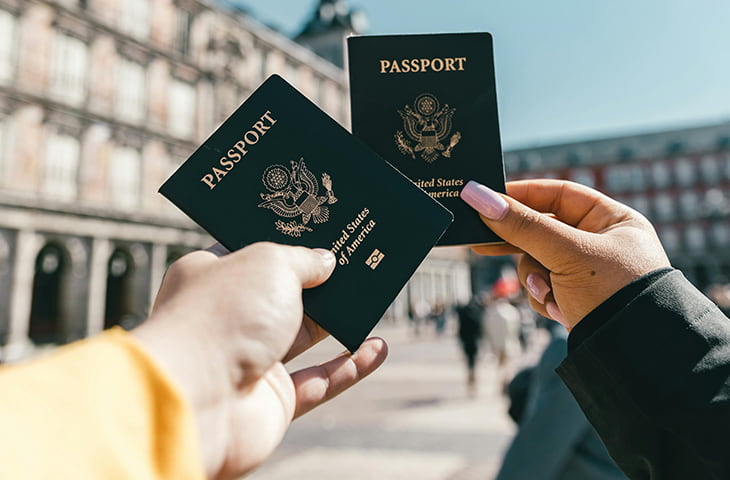'what Is Our Limit?': How Cruise Ships Are Impacting Alaska's Environment

- Ketchikan, Alaska, thrives on the cruise industry, but some locals say the growing number of tourists is impacting the environment.
- While cruise lines have made efforts to reduce their environmental impact, concerns remain about water and air pollution, noise, and disruptions to wildlife.
- There is a debate centering on finding a balance between the economic benefits of tourism and preserving Alaska's natural beauty and resources.
On a busy day during the Alaska cruise season, Ketchikan’s population can more than triple. Known for its mountain scenery, salmon and Alaska Native heritage, the roughly 8,000-person city at the southernmost entrance of the Inside Passage has welcomed more than 17,000 cruise visitors.
Creek Street, a popular antique boardwalk over Ketchikan Creek, is flooded with foot traffic.
“You go back onto Creek Street on a day like that; you can't walk down Creek Street because it's just jam-packed with people,” said Lincon Hauser, who owns two shops on the thoroughfare. Sam McGee’s sells products made in Alaska, while Poker Creek Gold carries gold nuggets and gold quartz jewelry, and more. Visitor numbers vary widely day to day, however.
The cruise industry was already booming in the state, a massively popular bucket-list travel destination for its glaciers, wildlife and seaside communities. But some locals say its continued growth is putting a strain on the very environment tourists come to see.
Hauser’s family has owned stores in Ketchikan since the late 1980s, setting up shop there because of the cruise industry. He has a total of four shops there now – some of which operate seasonally – and estimated that well over 90% of their business comes from cruise passengers.
He’s not the only one who benefits. Direct visitor spending amounts to almost $2.2 billion each year in the state, not including travel fares, according to Cruise Lines International Association Alaska. “This spending figure increases to $3.7 billion when labor income from visitor industry jobs is factored in, bringing the total economic output to $4.5 billion,” the trade organization said on its website.
In Juneau alone, the state’s busiest cruise port, a McKinley Research Group report for the City and Borough of Juneau found that cruises accounted for $375 million in direct spending in 2023.
But Hauser said the crowds have gotten noticeably bigger. In 2023, 1.7 million cruisers visited Alaska, up from nearly 1.2 the year before, according to the most recent numbers shared by the Alaska Travel Industry Association. Prior to the COVID-19 pandemic, 1.3 million visited in 2019.
The economic benefits aren’t so straightforward, though. “Those really busy days, you do more revenue,” said Hauser. “But if you look at it sort of per person that's in town, you're not doing as well as you would on, say, an 8,000-person day, because you just have more time to talk to people and sell stuff – not to sound too mercenary.”
When the cruise ships depart, much of their revenue goes with it and they scale back accordingly.
The Creek Street stores close, but they keep their downtown shops open until just before Christmas. While they employ roughly a dozen people during the season, he and his wife operate those shops on their own when it ends.
“The reality of the situation is, if we were relying on being a ‘local’ business, we'd be out of business,” he said.
He added that tourism has also become more dispersed throughout the city. Residents used to be able to retreat to nearby Ward Lake, for instance, but cruise ships began docking at Ward Cove in 2021. The greater Ketchikan Gateway Borough has more than 13,000 residents.
Tour guide Teague Whalen has noticed the uptick too. As the owner and operator of Tongass Teague LLC, he leads visitors – including cruise guests – on hikes and backcountry driving excursions.
One of his most popular tours takes participants to Settlers Cove State Recreation Site. “It’s really beautiful,” Whalen said. “There's a waterfall. The bears go down there to eat salmon when the salmon are running.” That’s followed by a visit to Tongass National Forest.
“I've seen that, in the last three or four years, really starting to grow in terms of the number of people that are going out there,” he said. “We're kind of confined to the same windows when the ships are in town, in terms of when they arrive and when they depart. So it's a little bit of a dance, for sure.”
They may have to do that dance for longer than before, too. The Alaska cruise season used to run from mid-May to mid-September but is now extending into April and October, according to CLIA Alaska. American Cruise Lines is doubling its Alaska capacity this year, and MSC Cruises, Virgin Voyages and the Ritz-Carlton Yacht Collection will launch sailings there in 2026.
Around 65% of the state’s summer visitors come by cruise ship, CLIA Alaska said on its website.
The cruise industry has worked to minimize its environmental footprint, but it’s a work in progress. Areas of concern regarding those impacts in Alaska have included:
- Water pollution
- Air pollution
- Noise pollution
- Disruptions to wildlife
- Waste generation
Jim Powell, an assistant research professor at the University of Alaska Southeast’s Alaska Coastal Rainforest Center said the dynamic has changed “dramatically” in the last 30 years.
In previous roles he held at the Alaska Department of Environmental Conservation, he said oil companies were once easier to work with than cruise lines because the latter “didn’t have a culture of being regulated.”
“The culture has changed drastically, and technology has changed drastically,” he said, pointing to advancements in onboard water treatment systems, for example.
He said a series of environmental regulations were enacted beginning in the early 2000s, primarily at the state level.
For example, the Alaska DEC’s Division of Water regulates cruise ship wastewater discharges through permits and inspections. During the 2022 cruise season – the industry’s first full year following its pandemic shutdown – the DEC characterized the monitoring among large ships that discharged their treated wastewater as “outstanding.”
“The 14 vessels which exceeded their limits were contacted and took corrective action during the season to address the discharges and all came back into compliance quickly,” the DEC said on its website. “In general, large cruise ship exceedances occurred sporadically and were typically indicative of ‘hiccups’ in the system, not systemic operational or maintenance issues.”
Close to half of large cruise ships sailing to Alaska do not discharge wastewater in state waters – or are not allowed to do so – and wait until they are at least three miles from shore. Those vessels can discharge without a state permit once they reach three miles from shore – though at between three and 12 miles they must have one from the Environmental Protection Agency, DEC said.
On the other hand, most small ships – those with room for 50 to 249 passengers – had “some form of exceedance,” according to DEC. “In contrast to the large cruise (ships’) advanced wastewater treatment systems, the small cruise (ships’) marine sanitation devices did not predictably produce treated wastewater which complied with their treatment standards,” the website reads.
Those kinds of state rules were a positive development, according to Powell. “But because of the number of cruise ships, because of the numbers of visitors, all the impacts have been increased,” Powell added.
Aaron Brakel with the non-profit Southeast Alaska Conservation Council (SEACC) said scrubbers – also called exhaust gas cleaning systems – are another major concern. The technology is used to remove pollutants from exhaust but may pose problems of their own.
“By installing these systems, vessels can be compliant with federal (sulfur oxide) emission regulations without using low-sulfur fuels,” the Alaska DEC said on its website. Open-loop scrubbers, one of several kinds, use seawater, discharging the wash water back into the ocean. The reduction in air pollution, some experts say, comes at a cost for the marine environment.
Studies have found that the discharges introduce harmful substances that wreak havoc on sea life, including some that have been linked to cancer in marine mammals, The Guardian reported. More than 5,000 vessels across the shipping industry had scrubbers as of mid-2023, according to the International Council on Clean Transportation.
“This is incredibly irresponsible,” said Brakel, Clean Water Campaigns Manager at the SEACC. “It's absolutely, totally out of bounds with what should be happening with protecting waters, especially when you look at the context of ocean acidification, climate change and the extinction crisis that we're experiencing on the globe.”
CLIA did not respond to multiple requests for comment.
Other concerns include activities associated with cruises like helicopter and float plane tours – which can be very noisy – and whale watching.
“Our whale-watching industry is what is a very popular thing for cruise ship passengers to do,” said Shannon Atkinson DeMaster, a professor at the University of Alaska Fairbanks’ College of Fisheries and Ocean Sciences. “And they're pretty much always satisfied because the whales that we have are quite localized, meaning that the whale-watching industry can get fairly close to them.”
She has been studying humpback whales for more than two decades and working for nearly six seasons on the Juneau Whale HEALTH Project. While there are guidelines and regulations limiting human proximity to them, DeMaster said they do occasionally see vessel strikes from cruise ships and others – calves are particularly vulnerable – and entanglements, including in fishing nets.
However, she said the “positive interactions are just numerous.”
“Every time an animal comes up to breathe, it's exciting, and especially if there is one or more animals coming towards you, or if it's a mom with a calf, all of those can be super educational for the cruise ship passenger or for the whale-watching industry,” she said. “And so that makes it exciting and a good learning opportunity.”
The whales are migratory and return to Juneau around the same time of year that cruise ships visit (though whales may show up earlier and stay later). The sustainability of the whale-watching industry’s continued growth is an open question, according to DeMaster.
From cutting back on food waste to curbing noise pollution in sensitive areas like Glacier Bay National Park and Preserve, cruise lines have taken measurable steps to minimize their environmental impact. Juneau was also the first port in the world to install shore power, according to CLIA Alaska, which can help reduce pollution.
Hotels for Holland America Line and Princess Cruises guests, two lines known for their Alaska offerings, diverted over 760,000 pounds of material from landfills in the state last year, parent company Carnival Corp. said in a recent news release. Sister brand Carnival Cruise Line also made a $50,000 donation to the Alaska Carbon Reduction Fund, among other efforts.
However, the company and several of its cruise lines have faced fines over the years for environmental violations in the state, Business Insider reported.
Some communities have adopted or proposed limits. Destinations ranging from Venice, Italy to Bar Harbor, Maine have taken action aimed at curbing cruise traffic. Major cruise companies Carnival Corp., Royal Caribbean Group, Norwegian Cruise Line Holdings and Disney Cruise Line agreed to a daily five-ship limit in Juneau that took effect last year.
A daily cap of 16,000 available lower berths – and 12,000 on Saturdays – will take effect in 2026 as part of another deal with the same companies. A “Ship-Free Saturdays” proposal was voted down there in the fall. And a proposed ballot initiative to limit cruise passengers in Sitka, among other changes, passed the city’s initial legal review in December after three failed tries, Alaska news outlet KTOO reported.
Hauser acknowledged the potential benefits of those kinds of limits – a day off for business owners on Saturdays during the otherwise hectic season, maybe – but was uncertain which model would best meet all parties’ needs. “There’s no easy answer,” he said.
Whalen said he would like to see more discussion about balancing the benefits of tourism and the needs of residents. “But that's a difficult thing, because Alaska has always been boom or bust, and we're going to try to ride that wave as far as we can just to be able to afford to stay living in this beautiful place,” he said.
At the same time, Whalen added, his tours are opportunities to showcase the importance of protecting natural resources.
He provides context about logging, for example, while leading participants through forests that have been logged. The experience has sparked conversations about conservation, and the group sometimes spitballs potential solutions.
“I think it is a challenge with the more and more guests that we get into an area, you know? What is our limit?” Whalen said. “What is going to be a healthy balance for our natural environment, our waterways, our actual town, the people that live here?”
Nathan Diller is a consumer travel reporter for USA TODAY based in Nashville. You can reach him at ndiller@usatoday.com.


